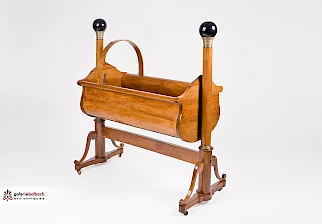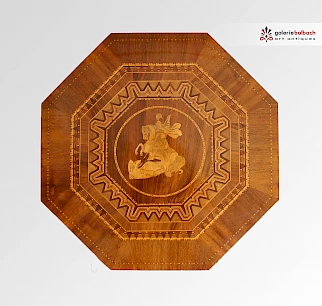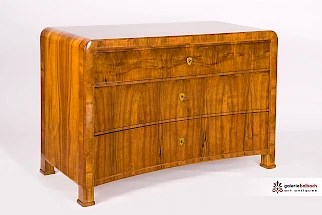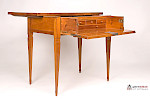Walnut
Botanical name: Juglans regia, Juglans arguta
 Walnut wood was and is probably the most popular domestic precious wood for antique furniture of all epochs. In contrast to cherry wood or oak wood, which went out of fashion from time to time, the wood of the walnut tree was popular at all times and we find it above all on antiques from the Baroque, Classicist, Biedermeier and Wilhelminian periods.
Walnut wood was and is probably the most popular domestic precious wood for antique furniture of all epochs. In contrast to cherry wood or oak wood, which went out of fashion from time to time, the wood of the walnut tree was popular at all times and we find it above all on antiques from the Baroque, Classicist, Biedermeier and Wilhelminian periods.
Antique furniture made of walnut
The beautiful pattern in the grain lends itself to mirrored veneer pictures. South German and Austrian Biedermeier furniture is often veneered with walnut on softwood. In baroque and early classicist furniture, we find walnut in combination with lighter woods such as maple or ash.
The fine pores of the wood make it ideal for shellac polishes. But beautiful wax or oil finishes are also possible.
Dark and light walnut
The structure of walnut ranges from simple straight lines to wild and lively. The colour is also absolutely interesting and can go from light reddish to dark brown even within one log. The sapwood and heartwood are strongly contrasting in colour.
In Central and Southern Europe, walnut was used both as solid wood and as veneer.
Due to its good workability and beautiful wood structure, walnut is still one of the most popular woods in furniture and interior design.
The walnut used in the period of origin of our furniture came from the respective region of origin of the furniture.
Also interesting

Fillet-tape
Fillet band or fillet marquetry is the term we use to describe light and dark veneer surfaces placed diagonally [...]Read more













